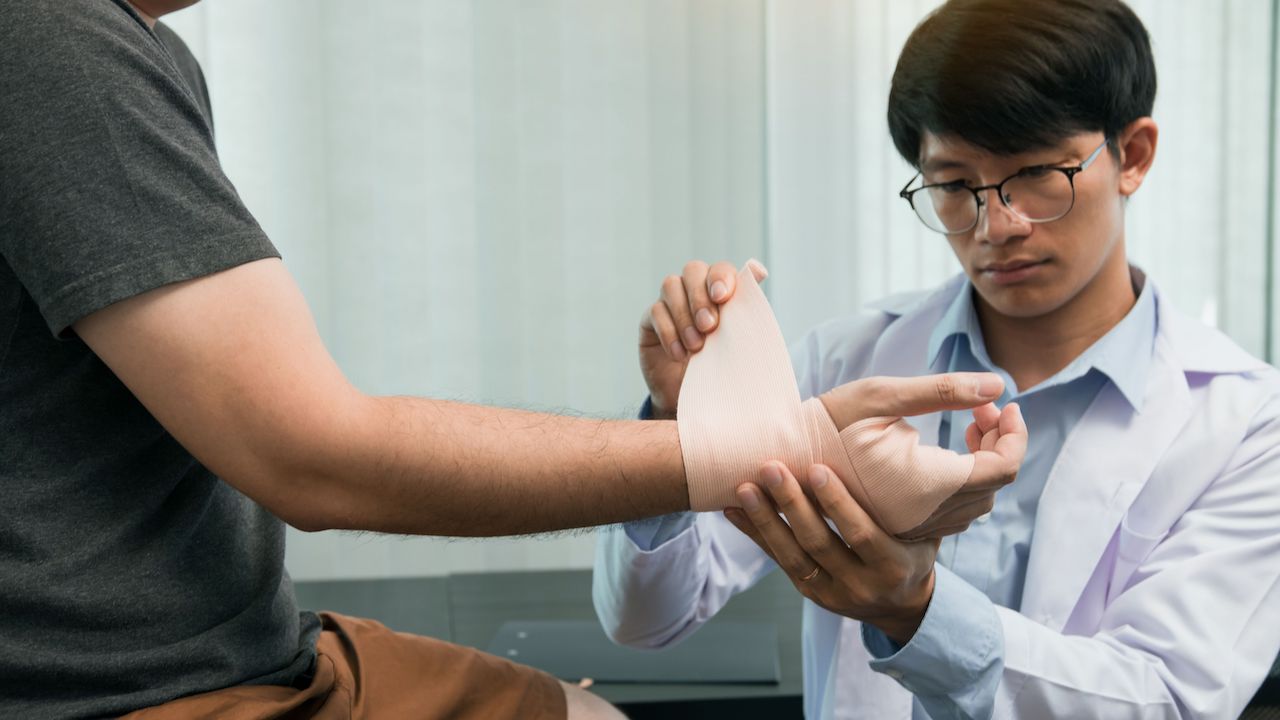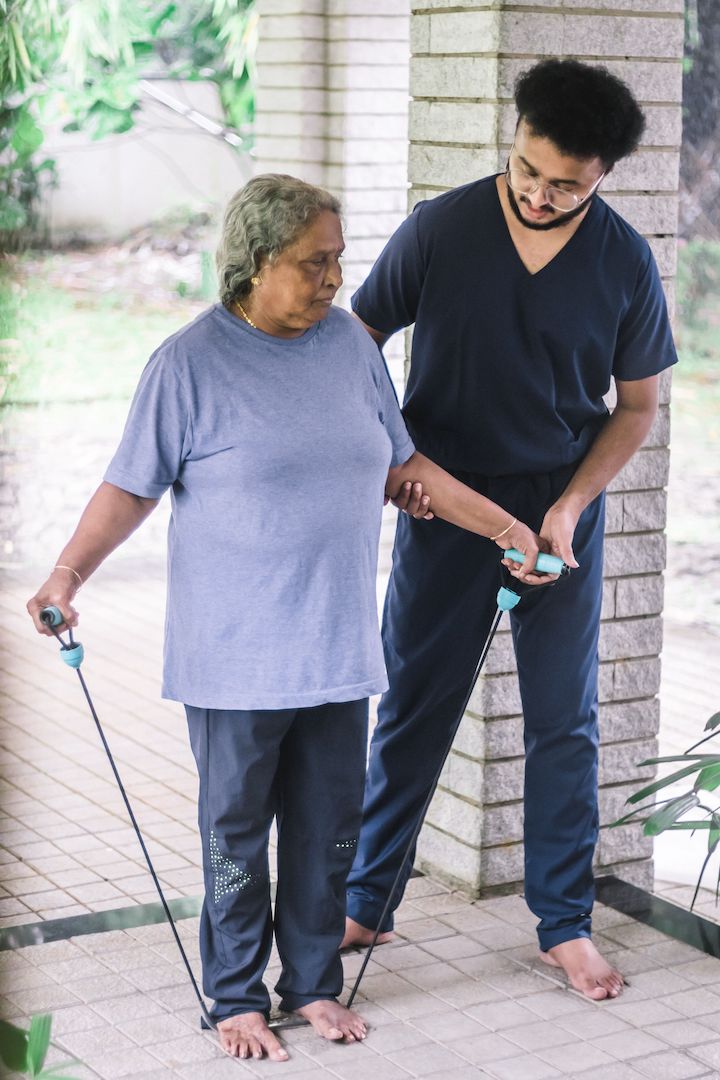

Are you or someone you know living with arthritis? This common condition affects millions of people worldwide, causing pain, stiffness, and decreased mobility. While there is no cure for arthritis, there are ways to manage its symptoms and improve your quality of life. One effective approach is physical therapy.
Physical therapy involves a range of exercises and techniques that can help reduce pain, increase flexibility, and improve strength in individuals with arthritis. By working with a physical therapist, you can develop an individualized treatment plan that addresses your unique needs and goals.
In this article, we will explore the role of physical therapy in arthritis management and provide tips for incorporating it into your overall treatment plan.
Let’s dive into what arthritis is and how it affects the body.
Arthritis is a common condition that affects millions of people worldwide. It refers to inflammation of one or more joints, which can cause pain, stiffness, and swelling.
The two most common types of arthritis are osteoarthritis (OA) and rheumatoid arthritis (RA). OA occurs when the cartilage that cushions the ends of bones wears down over time, causing bones to rub against each other. RA is an autoimmune disease in which the immune system attacks healthy joint tissue, leading to inflammation.
Causes and prevalence of arthritis vary depending on the type. OA is typically caused by aging, injury or overuse of joints, obesity, genetics or heredity factors. On the other hand, RA has no known direct cause but smoking and family history may increase its risk factor.
Both types are prevalent among older adults but OA can also affect younger individuals who have suffered joint injuries before while RA commonly affects women between 30-50 years old.
Check out how physical therapy can help the elderly in every possible way.
Diagnosis involves seeing a doctor specializing in musculoskeletal disorders who will assess symptoms such as pain at rest or during movement, swelling and redness around affected joints as well as take a medical history from patients suffering from any underlying conditions such as diabetes or heart disease to rule out possible complications before starting treatment options including physical therapy interventions for pain management purposes.
You’ll learn how physical therapists can help you manage your arthritis symptoms and improve your mobility.
Physical therapy is an effective way to combat the pain and stiffness associated with arthritis. By working with a physical therapist, you can reap the benefits of specialized exercise techniques that are designed to target specific areas affected by the condition, increase the range of motion, and improve joint function.
 Photo Credit: Studio Roman
Photo Credit: Studio Roman
Physical therapy sessions typically start with an evaluation where the therapist will assess your current level of mobility and identify any limitations or restrictions in movement. From there, they will develop a treatment plan tailored to your specific needs using a combination of exercises, manual therapy techniques, and modalities such as heat or ice therapy.
Your physical therapist will also educate you on proper body mechanics and posture to minimize joint stress during daily activities. With consistent practice and guidance from your physical therapist, you can experience significant improvements in your quality of life despite living with arthritis.
Getting physical therapy can help you relieve pain and stiffness, increase mobility, and improve joint function associated with arthritis. By incorporating technology, physical therapists can tailor a program that fits your specific needs and goals. They use different tools like ultrasound machines, lasers, and electrical stimulation to enhance the effects of manual therapy exercises.
Moreover, physical therapy provides long-term benefits in managing arthritis symptoms. Your therapist will work with you to develop a personalized exercise regimen that suits your lifestyle and fitness level. By doing so, they can teach you how to properly move your body without causing more pain or damage to your joints.
As you progress through the program, you’ll notice improvements in strength, flexibility, balance, and endurance. These changes not only alleviate symptoms but also promote overall health and well-being for years to come.
To make the most out of your sessions, your PT will introduce you to a variety of exercises that target different muscle groups and joints.
Strengthening exercises are one type of exercise that can be used in physical therapy. These types of exercises help to build up the muscles around the affected joint, reducing the pressure on it and improving overall function. Your PT may use resistance bands, weights or bodyweight exercises to achieve this.

Range of motion exercise is another important aspect of physical therapy for arthritis management. This type of exercise involves moving your joints through their full range of motion to improve flexibility and reduce stiffness. Your PT may use stretching or other techniques to help you achieve this.
Regular range-of-motion exercises can help slow down the progression of arthritis by helping keep your joints mobile and flexible while also reducing pain levels in affected areas.
As your PT works with you, they’ll utilize various techniques to help improve your joint mobility and flexibility.
One of the most common techniques used in physical therapy is manual therapy. This involves hands-on manipulation of soft tissue and joints, which can help increase the range of motion and decrease pain. Your therapist may use gentle pressure or stretching movements to release tension or tightness in your muscles and improve overall joint function.
Another technique commonly used in physical therapy is aquatic therapy. This involves performing exercises in a pool, which can provide a low-impact environment for individuals with arthritis who may experience discomfort with weight-bearing activities on land. The buoyancy of the water also provides support for the body, allowing for easier movement without putting stress on the joints.
Aquatic therapy can be an effective way to improve strength, flexibility, and endurance while minimizing pain during exercise.
When you’re receiving treatment from a physical therapist, don’t you want to feel like the plan is tailored specifically for your needs and goals? That’s exactly what an individualized approach in physical therapy does.
By taking into account your specific condition, symptoms, and limitations, a customized treatment plan can improve treatment effectiveness and help you achieve your desired outcomes.
 Photo Credit: Studio Roman
Photo Credit: Studio Roman
An experienced physical therapist will conduct a thorough assessment of your condition before creating a personalized plan that addresses your unique needs. Your customized plan may include exercises, stretches, manual therapy techniques or modalities that are targeted to relieve pain and inflammation while improving mobility and function.
With this approach, you can rest assured that every step of the treatment process is designed with your well-being in mind. So if you’re looking for arthritis management solutions that work for you on a personal level, consider seeking out an experienced physical therapist who can provide a tailored approach to care.
You deserve to work with a physical therapist who understands your unique needs and goals and can provide personalized treatment that helps you feel better, move easier, and live life to the fullest.
When it comes to managing arthritis, working with a physical therapist is an essential part of your treatment plan. They’ll assess your condition, develop a customized plan for you, and guide you through exercises that promote injury prevention and mobility improvement.
It involves building a relationship based on trust, communication, and collaboration. You’ll need to share your medical history, symptoms, limitations, and expectations so that they can design an individualized plan that fits your lifestyle.
During therapy sessions, they’ll monitor your progress closely and adjust the plan as needed. Their goal is not only to relieve pain but also to help you regain strength, flexibility, balance, endurance, and confidence in your abilities.
By partnering with them on this journey towards optimal health and well-being, you can achieve long-lasting benefits from physical therapy for arthritis management.
By adding physical therapy to your arsenal of treatments for arthritis, you can hit the ground running and give yourself a leg up in the battle against joint pain.
 Photo Credit: Kampus Production
Photo Credit: Kampus Production
Incorporating physical therapy into your comprehensive treatment plan involves patient education, home exercise programs, and regular visits with a licensed physical therapist.
Physical therapists work with patients to create personalized plans that cater to their unique needs and abilities. These plans may include exercises designed specifically for strengthening muscles around affected joints or reducing inflammation through gentle stretching.
By incorporating these exercises into your daily routine at home, you can not only improve joint function but also increase mobility and decrease pain.
When it comes to managing arthritis symptoms at home, there are a few key areas to focus on.
First and foremost, your diet and nutrition can play a big role in how you feel. Eating a well-balanced diet rich in fruits, vegetables, lean protein, and whole grains can help reduce inflammation and manage your weight.
In addition to eating well, staying active is also important for managing arthritis symptoms. Regular exercise can improve joint flexibility and strength, reduce pain and stiffness, and boost overall mood. Consider incorporating low-impact exercises like swimming or yoga into your routine.
Finally, working with a physical therapist can be incredibly beneficial for those living with arthritis. A physical therapist can help develop an individualized exercise plan tailored to your specific needs and limitations, as well as provide guidance on proper body mechanics to avoid further joint damage.
Make sure you’re eating a healthy, balanced diet with plenty of fruits and vegetables to help manage your arthritis symptoms. Making dietary changes is one of the most effective ways to combat inflammation and pain caused by arthritis.
A diet rich in anti-inflammatory foods like leafy greens, berries, nuts, and fatty fish can help reduce joint pain and stiffness. In addition to adding more anti-inflammatory foods to your diet, it’s important to limit or avoid foods that can trigger inflammation in the body.
Processed foods, sugar-sweetened beverages, fried foods, and red meat are all known to contribute to inflammation. By making simple changes like swapping out soda for water or replacing red meat with plant-based protein sources, you can make a big difference in how you feel on a daily basis.
One of the best ways to alleviate joint pain and stiffness is by incorporating regular exercise and physical activity into your daily routine. While it may seem counterintuitive to move more when you’re experiencing discomfort, the truth is that consistent movement helps keep your joints lubricated and flexible. This means less pain and a better range of motion over time.
 Photo Credit: Kanchana Chitkhamma
Photo Credit: Kanchana Chitkhamma
But it’s important to remember that not all exercises are created equal, especially when dealing with arthritis. It’s crucial to adapt your exercises to your individual needs and limitations. This means working with a physical therapist who can help create a tailored workout plan that focuses on low-impact activities like swimming, walking, or cycling.
They’ll also be able to show you specific stretches and movements that target problem areas without putting unnecessary stress on already tender joints. Consistency is key here – even if it’s just 10 minutes of exercise each day, sticking with a routine will pay off in the long run as you continue to build strength and improve mobility.
Looking ahead, it’s important to note that incorporating innovative technologies and telehealth solutions into arthritis care can greatly enhance patient outcomes. These new approaches have the potential to provide patients with more personalized treatment plans, as well as an increased level of flexibility and accessibility in their care.
One such example is the use of wearable technology, which has been shown to have a positive impact on managing arthritis pain. By tracking physical activity levels and providing real-time feedback, these devices not only help patients stay motivated but also allow healthcare providers to track progress more closely.
Additionally, telehealth solutions provide greater access to care for those who may have difficulty travelling to appointments or living in remote areas. With the continued development of these technologies and approaches, the future of arthritis management looks promising for both patients and healthcare providers alike.
If you’re looking for ways to complement your physical therapy routine and manage arthritis symptoms, consider incorporating mind-body techniques and dietary interventions.
Mind-body techniques like meditation, yoga, and tai chi have been shown to reduce stress levels which can help alleviate some of the pain associated with arthritis. Additionally, certain dietary interventions such as increasing omega-3 fatty acids or reducing inflammatory foods may also help manage symptoms.
Remember to always consult with your healthcare provider before making any significant changes to your treatment plan. By exploring non-traditional therapies in addition to physical therapy, you can take a more holistic approach to managing your arthritis and improve your overall well-being.
When it comes to arthritis management, physical therapy can be a highly effective treatment option. However, not all types of arthritis are best suited for this approach.
In some cases, incorporating non-traditional therapies like yoga therapy or aquatic therapy may be more beneficial for managing symptoms and improving overall joint health. These alternative therapies can provide gentle movement and relaxation techniques that may help reduce and inflammation while increasing flexibility and range of motion.
If you’re currently struggling with arthritis symptoms, talk to your healthcare provider about whether physical therapy or other non-traditional treatments might be right for you. Remember, there are many options available to help manage your condition and improve your quality of life!
Did you know that according to a study, 70% of patients with knee osteoarthritis who underwent physical therapy reported significant improvement?
When it comes to the timeline for improvement in physical therapy for arthritis management, it varies depending on several factors. Generally, you can expect to see some degree of improvement within four to six weeks if you attend sessions regularly and follow your therapist’s recommendations outside of treatment.
However, other factors such as the severity of your condition, overall health status, and adherence to exercise routines can also affect progress. Keep in mind that physical therapy is not a quick fix but rather a long-term commitment towards improving your mobility and quality of life.
If you’re considering physical therapy as a treatment for arthritis, it’s important to understand its benefits and limitations.
While physical therapy can be incredibly helpful in managing pain, improving mobility, and preventing further damage to joints, it may not always be enough on its own. In some cases, physical therapy may need to be combined with other treatments like medication or surgery to achieve the best possible outcomes.
However, don’t let this discourage you from exploring the potential benefits of physical therapy – even if it’s not a standalone treatment option for your arthritis, it can still play an important role in your overall management plan.
When undergoing physical therapy for arthritis management, it’s important to be aware of potential risks and side effects. Some patients may experience increased pain or discomfort during therapy sessions, but this can usually be managed with adjustments to the treatment plan.
However, the benefits of therapy often outweigh any risks, as physical therapy has been shown to help improve joint flexibility and reduce inflammation. Additionally, working with a qualified physical therapist can provide valuable guidance on exercises and lifestyle changes that can further support your arthritis management goals.
So while there may be some potential risks involved in physical therapy for arthritis management, the overall benefits are well worth considering.
Congratulations! You now have a better understanding of how physical therapy can play an important role in arthritis management. By working with a skilled physical therapist, you can benefit from personalized exercise programs and techniques that are tailored to your unique needs and goals.
Through regular sessions, you can improve your joint function, reduce pain and inflammation, and enhance your overall quality of life. While the road ahead may not be easy, by incorporating physical therapy into a comprehensive treatment plan and practising good self-care at home, you can take control of your arthritis symptoms and continue to live life to the fullest.
So why wait? Start exploring your options today and find a physical therapist who can help guide you on the path to long-term health and wellness!
There are no results matching your search.
Reset